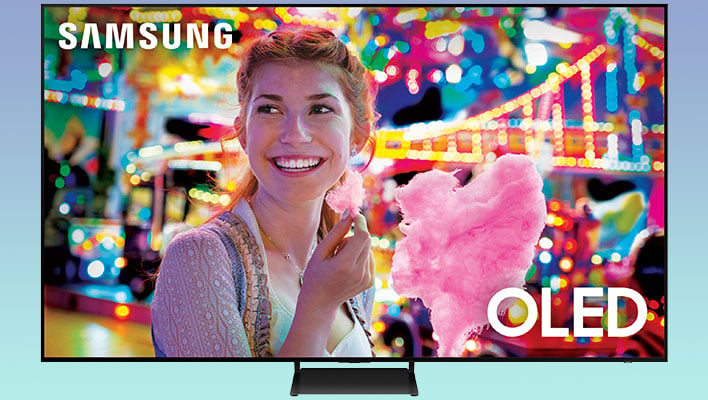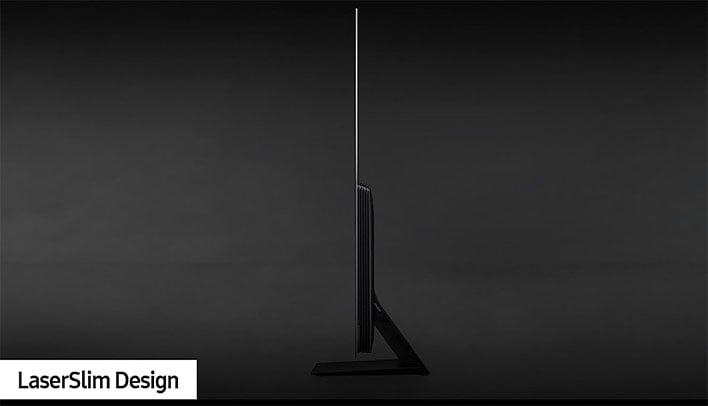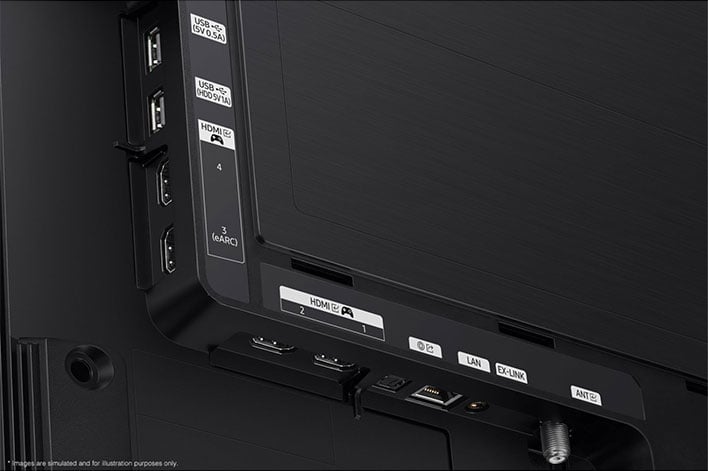Samsung Takes On LG And Sony With A Big And Bold 83-Inch OLED S90C 4K Smart TV

Be warned that once you sit for a spell in front of a massive TV, you'll never want to go smaller. Or at least that's been my experiencing, having gone from a 52-inch to a 75-inch and, most recently, an 85-inch TV over the years. Now I'm loathe to go with anything smaller than an 85-incher, though I'd consider making an exception for Samsung's 83-inch addition to its S90C OLED 4K smart TV lineup. Once pricing comes down, that is (more on that later).
I haven't made the leap to OLED because (A) OLED TVs typically carry a price premium and (B) they generally are not as bright as cheaper LCD models, especially with the advent of mini LED. However, OLED has been making headway in both of those areas—while still not cheap, pricing is a lot better these days on OLED models, and they're getting brighter too.
The latter is where Samsung's S90C shines, quite literally, according to the display gurus at Rtings who reviewed the 65-inch model. In the review, the site notes that the QD-OLED panel offered "fantastic reflection handling and great HDR brightness in Game Mode, so you'll enjoy gaming on this TV even on a bright, sunny day." That said, there are still brighter models, and the S90C will perform best in a dark room.
Brightness aside, it's the combination of size and OLED technology that are the real selling points with the newly minted 83-inch S90C. Only somewhat recently have bigger screen OLED TVs entered the realm of not-so-outrageous pricing (read: still pricey, but not 'sell your first born' pricey).

"Large screen sizes are the fastest growing segment in the TV industry. With this new 83-inch class OLED S90C 4K TV model, we are providing yet another option for people to experience the benefits of OLED TV from Samsung, on an even bigger screen," said James Fishler, Senior Vice President, Home Entertainment & Display Division, Samsung Electronics America.
"We recognize that no two people are the same, and they want to find the perfect TV to fit their unique space and lifestyle. That’s why we’re offering more choices than ever, whether you prefer a Neo QLED 4K, OLED, or even a lifestyle TV. There’s always a premium option for viewers to choose," Fishler adds.

We're not here to talk about those other models, though. Samsung's shiniest new toy is an 83-inch behemoth with a "LaserSlim" slim that's mostly devoid of bezels. Unlike some earlier models where Samsung skimped on HDMI 2.1 connectivity, the S90C packs four HDMI 2.1 ports (one with eARC) supporting the spec's full bandwidth—great if you plan to hook up a console and game at 4K/120Hz—and features like auto low latency model (ALLM) and variable refresh rate (VRR), as it's also a FreeSync Premium model. It's always important to check the actual specs because not all HDMI 2.1 ports are the same.
Samsung's other ace in the hole for gaming is its Gaming Hub. It essentially offers easy access to cloud gaming services such as GeForce NOW and Xbox Cloud Gaming, along with streaming services like Twitch.
What about the price? Well, Samsung's introductory MSRP is $5,399.99. Oddly enough, Amazon has it listed for $5,564.26, which is even higher. Give it time, though, and we suspect the price will come down. To that end, the 83-inch SKU is the only model on Samsung's website that isn't selling for less than its MSRP. For example, the 77-inch model carries a $3,599.99 MSRP but is seling for $3,199, while the 65-inch model has a $3,299.99 MSRP and is selling for $2,999..99.
Regardless, it's not for the faint of wallet/purse. Competition is always good, though, and Samsung going up against LG and Sony in the 83-inch OLED space. Here are some other models...
- 83-Inch LG C2 Series OLED EVO: $3,996.99
- 83-Inch Sony A90J Bravia Xr OLED: $4,133.36
- 83-Inch LG C3 Series OLED Evo: $4,599
- 83-Inch LG G2 Series Evo: $4,776.99
- 83-Inch Sony A80L Bravia XR: $5,448
- 83-Inch LG G3 Series OLED Evo: $5,996.99
Samsung's 83-inch S90C OLED is at least in the general ballpark, albeit at the higher end of the pricing spectrum. It's also most comparable to LG's G3 series, according to Rtings, with the two trading blows (LG's is brighter and supports Dolby Vision while Samsung's is more vibrant and supports 4K at 144Hz).
If nothing else, the push into 83-inch territory should help drive prices down across the board, especially for 77-inch and 65-inch class OLED TVs.

